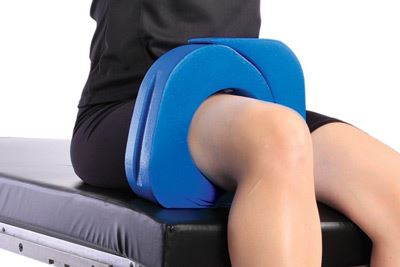-
Home
-
The Growing Popularity of Ambulatory Surgery Centers
The Growing Popularity of Ambulatory Surgery Centers
June 7, 2019

Ambulatory surgery centers (ASCs) offer the convenience of having surgeries performed outside the hospital setting and often allow patients to go home on the same day. Currently, there are more than 5,400 Medicare-certified ASCs in the U.S.; however, this figure will likely increase as research forecasts that by 2028, 85% of all surgeries will be done in an outpatient environment, with orthopedic joint replacement as one of the top procedures going to outpatient.1 ASCs are becoming more popular as they have shown to improve patient care and reduce costs.2 In addition to the potential for significant cost savings, other factors driving the trend to ambulatory surgery centers include improvements in surgical techniques, implant devices, and pain management. Patients enjoy several benefits by having their procedure done at an ASC, including more convenient locations, more on-site parking, reduced wait times, and easier scheduling. Researchers have found that ASC procedures experienced 39% shorter perioperative time compared to similar hospital-based surgeries. This is good for patients, their loved ones, and their pocketbooks as faster procedures are less costly. It’s no wonder that 92% of patients are satisfied with the care and service they receive at an ASC, and complaint rates are lower than two per thousand cases.3
Physicians also report higher satisfaction with ASCs over hospitals. That’s because ASC operating rooms are often designed to accommodate a particular procedure, increasing efficiencies and economies of scale. ASCs rarely see disruptions to accommodate medical emergencies, allowing physicians to better schedule their day. And the savings accrued from more efficient procedures make it possible for physicians to provide services to patients regardless of ability to pay.
Importance of Proper Patient Positioning at ASCs
Proper patient positioning during surgery is an area that facilities are paying close attention to. Optimal patient positioning can help to reduce patients’ risk of complications. Every additional minute in an O.R. increases the patient's risk of infection or complication, so having proper positioning for a procedure can help surgeons access necessary areas quickly and easily. This is particularly true with hip replacement surgery, which is a very common procedure performed at ASCs.
Study found no increased risks
Dr. Ast and colleagues conducted a study at the Rothman Orthopedic Institute to compare patient outcomes and costs for in-patient hip and knee replacement surgeries to those performed in an ambulatory surgery center. The findings indicated that there was no increased risk of 90-day complication rates or readmission rates for patients who were discharged the same day compared to patients who had the same procedures and stayed in the hospital.2 One group of patients had their procedure done at an ASC while the second group had their surgery at a university medical center. The patient population between the two groups were matched by procedure, age, sex, body mass index and health assessments. In each group, 77 patients underwent total hip replacements and 49 had total knee replacements. The average length of stay in hospital was 8:09 hours for the ambulatory group, compared to 23:24 hours for the in-patient group.
In summary, there were no meaningful differences between the two groups regarding complication and readmission rates.
There was a significant difference between the two groups regarding the total cost of the procedure. Average costs per patient for ASCs was $11,677 versus $19,361 for the in-patient group. Costs associated with the procedure included staffing, medications, implant, and postoperative care. Researchers did note, however, that ambulatory surgeries are best for patients without any preexisting health conditions, don't require special medications after surgery, and have caregivers who can support their recovery at home.
AliMed Has Your ASC Covered
AliMed offers a wide range of medical devices and clinical furnishings to outfit your ASC O.R. Click here to learn more.
References
- https://www.ascfocus.org/ascfocus/advertise/sponsored-articles/sponsored-content/2019/the-importance-of-positioning-for-improving-patient-outcomes-in-orthopedic-surgery
- https://www.ascassociation.org/advancingsurgicalcare/aboutascs/industryoverview/apositivetrendinhealthcare
- https://www.aaos.org/uploadedFiles/PreProduction/About/Opinion_Statements/position/1161%20Ambulatory%20Surgical%20Centers.pdf